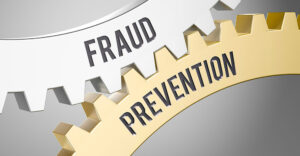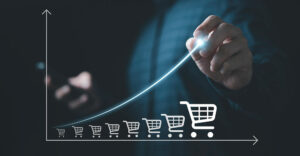If the ongoing struggles amid the pandemic have taught retailers anything, it is the need to automate their customer service experience. Customer experience automation (CXA) is making the difference between hanging on until closing down and ensuring more returning customers.
CXA can revitalize a merchant’s customer relations process to drive more sales now — and far beyond the current shopping trends the pandemic is creating, agreed William Taylor, senior career advisor at VelvetJobs.
Two key ingredients that this latest customer experience formula must include are efficient contactless pickup and delivery procedures, and contactless payment for in-person shopping. The pandemic has made those requirements non-negotiable between merchant and shopper.
“Consumers want safety, and they want to know that when they have to touch something, that it’s sanitized,” he told CRM Buyer.” There is nothing more assuring than their own phone. What was more of a convenience option has now turned to a safety feature.”
Pushing New Limits
During the pandemic, curbside pickup at retail stores skyrocketed by 208 percent. Contrast that with a 2019 study which predicted that within a year 25 percent of consumers would participate in curbside pickup. With this year’s challenges, that percentage has more than tripled.
CXA can pave the future of contactless delivery and pickup. It provides a way for store operators to streamline the communication process by ensuring consumers are aware of the times, locations, and overall logistics of a business’s procedure.
Improving the customer relations process is not just paving the future for contactless delivery and pickup. It is also paving the future for contactless payments.
The pandemic has only accelerated the growth of contactless consumer payments. Well-known players such as Apple Pay, Samsung Pay, and Google Pay have all reported growth. At the same time, small businesses are also tapping mobile payment companies for contactless payment experiences.
What CXA Provides Merchants
Customer experience automation gives businesses ways to maintain a personal, human interaction; which all consumers want. It comes through the contactless delivery and pickup experience, by addressing a customer’s preferences and needs through all channels, according to Jason VandeBoom, CEO of ActiveCampaign.
“Rather than over-automating the experience, CXA allows teams to blend the best of automation with a personal touch so even low-resourced teams can differentiate,” he told CRM Buyer.
They can do this is a variety of ways. One is sending personalized SMS updates to customers about their delivery. A variation is checking in with the customer after the pickup is completed.
A second approach leverages purchasing data to personally engage with consumers on the digital platforms where they want messages. For example, Whole30 saw a 10 percent increase in revenue by personalizing its Facebook messages based on customer behavior, VandeBoom noted.
A third method is using predictive content to recommend the right product at the right time. This lets customers easily add additional items to their order.
Pandemic-Induced Strategies
CXA drastically changes the buying experience, according to Maksym Babych, CEO of the product development company SpdLoad. His company worked on development for contactless retailing long before the pandemic quarantine set in.
Required elements in today’s world include two essential elements. One is chatbots with AI content recommendations. The other is delivery drones and robots.
“So this prognosis is more than real, as technologies focus on providing the personal-centered experience,” he told CRM Buyer.
The coronavirus pandemic is the catalyst for how we are all doing business. It has undoubtedly paved the way for big changes in the way consumers spend and pay, added Allan Borch, growth hacker and founder of Dotcom Dollar.
“The rise of curbside pickup reflects a larger trend involving contactless payments,” he told CRM Buyer. “Until an effective vaccine is found and made readily available to the public, we can expect people to continue to use any and all alternatives to the traditional, in-person shopping experience.”
How Chatbots Work for CXA
Most companies that are participating in contactless delivery and pickup should start leveraging chatbots to optimize communication, according to Anthony Mixides, CEO/founder of The London Vape Company. Store operators instituting chatbots should keep several things in mind, he suggested.
Using a database of customer queries, complaints and questions can be uploaded into chatbots where they can then provide the answers to more than 90 percent of typical user queries. This eliminates the need to email your company and/or speak to someone on the phone.
“This is just the way our ever-increasing anti-social consumers like it,” he told CRM Buyer.
Stores can use chatbots to prompt customers with answers to common questions right away. In e-commerce especially, the less consumers have to think, the happier they are with your company and customer service, he added.
However, chatbots will not suit all consumers. Some customers want to speak to a human being and/or have a more complex query. In this case, you can use screen inquiries to filter customers’ needs. Filter th that need additional assistance to the right agent using advanced routing strategies to ensure that they are getting the appropriate support.
“The chatbots can gather so much [customer] information before putting them through, giving the agent a lot of information they need, instead of frustrating the customer by asking them all the same questions a previous human being would have asked,” Mixides noted. “There is nothing worse than explaining your issue to three different people in three different departments.”
Continued Growth Ahead
Options like buying online and picking up in-store or BOPIS are now considered must-dos for brick and mortar stores, SpdLoad’s Babych added. A recent study from Invesp, a provider of website conversion optimization intelligence, bears out that essential component, Borch suggested.
That study shows that 67 percent of US shoppers have used BOPIS in the past six months. The study also predicts that 10 percent of all sales will be fulfilled by ‘click and collect’ concept by 2025.
Curbside pickup has become popular with retailers, restaurants, and grocery stores. It’s easy to see why this happening, he observed.
“The option is convenient for shoppers, limits congestion in stores, and minimizes human interaction. The introduction of customer experience automation will only serve to make curbside pickups more efficient while safeguarding both employees and customers,” said Borch.
The bottom line is that curbside pickups, BOPIS, and other contactless payment options will continue to see increasing demand. Adding customer experience automation will only make these services more valuable to shoppers in the United States and beyond, he emphasized.
C-Stores Effected Too
PDI, a tech company that provides supply chain, ERP, loyalty, and fuel solutions to convenience stores, recently announced a partnership with Vroom Delivery that has enabled c-store customers to order ahead, pick up curbside and deliver. This is especially important to help communities during the coronavirus crisis, according to Erin Farrell Talbot, founder and president of Farrell Talbot Consulting.
This is a mobile ordering platform specifically designed for the convenience store industry. It provides these smaller c-store retailers with a much-needed CRM solution to help fight the pandemic and give customers a safe alternative for buying essentials instead of needing to go inside a store.
“It also helps combine loyalty, online ordering, curbside pickup and delivery to empower these smaller c-stores to provide a good customer experience; and it all ties in with the backroom for a c-store operator,” she told CRM Buyer.
How to Use CXA
Retailers need to think about how physical locations factor into their customer relations journey. Digital is the front door to curbside pickup. Therefore your app and website need to meet customer needs there first. This includes communicating the process and inventory availability, according to Anthony Trupiano, sales director at Verint.
“Having a customer add items to the cart only to find them not available for curbside quickly leads to frustration, a lower likelihood for return visits, and fewer recommendations,” he told CRM Buyer.
After an order is placed, it is vital to keep information flowing to customers and do at least these two things. One, coordinate order confirmation, order status, and other pre-pickup details. Two, explain the process by telling customers where to pick up upon arrival and what is needed to alert your team within the stores.
Based on viewing curbside pickup through a customer experience lens, Trupiano offers four CX best practices to create a fulfillment experience that shoppers will remember:
- Track the customer journey from the initial digital interaction until after the curbside pickup has been made.
- Measure across digital channels and understand the resulting tactical, operational, and strategic opportunities. Focus on how digital is helping or hurting BOPIS and curbside pickup experiences. Concentrate on process clarity, inventory availability, identifying/correcting technical issues, etc.
- Understand customer perception from order placement through order pickup. Pay close attention to improvement opportunities tied to process communication, employee feedback, and service-level standards, and configure this process to allow for swift action.
- Implement a closed-loop management process for following up with consumers who did not have a satisfactory experience (e.g., wrong/incomplete order, associates not following safety protocols, the process took too long, etc.).

“Curbside pickup provides the unique opportunity when done right to give customers the right blend of speed, convenience, safety, and associate interaction to help brands differentiate with CX,” Trupiano concluded.


















































Social Media
See all Social Media